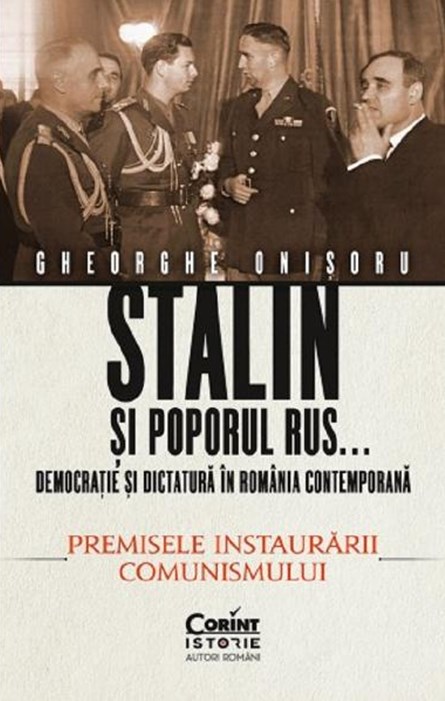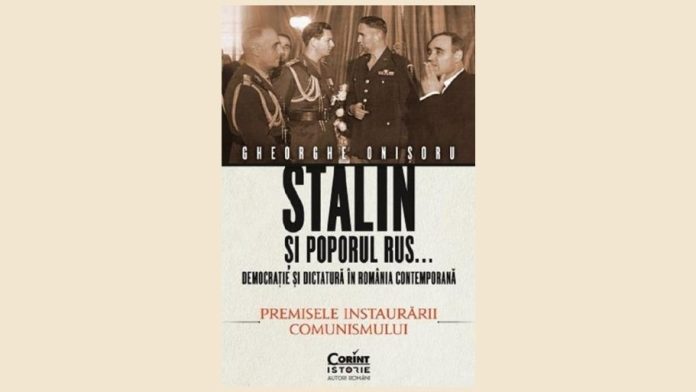Article appeared on bookhub.ro
We invite you on Tuesday, 29 March 2022, at 12.00, in the “Ion Heliade Rădulescu” Amphitheatre of the Romanian Academy Library, to a discussion with prof. unv. Dr. Gheorghe Onișoru, full member of the HISTORICAL AND ARHEOLOGICAL SCIENCES Section – AOSR, author of Stalin and the Russian People… Democracy and Dictatorship in Contemporary Romania, The Premises of the Establishment of Communism (vol. 1) and Stalinism in Romania (vol. 2), published in the collection Corint History Romanian Authors.
Alongside the author, the event will be addressed by Acad. Răzvan Theodorescu, Vice-President of the Romanian Academy, Acad. Victor Spinei, Vice-President of the Romanian Academy, Dr. Florian Banu, Dr. Constantin Buchet, Dr. Dan Cătănuș, Dr. Florin-Răzvan Mihai and Dr. Vasile Buga. The discussion will be moderated by Mr Nicolae Noica, Honorary Member of the Romanian Academy, Director General of the Romanian Academy Library.
The launch event is organized by the Centre for Russian and Soviet Studies ,,Florin Constantiniu” of the National Institute for the Study of Totalitarianism of the Romanian Academy, in partnership with Corint Publishing House.
The two volumes Stalin and the Russian People… map the communization process which, in Romania, followed a model thought out down to the last detail in the Kremlin, but also had its own characteristics, stemming from the peculiarities of Romanian history in the first part of the 20th century. The abdication of King Michael I at the end of 1947 and the proclamation of the Romanian People’s Republic immediately afterwards cannot be understood without studying and analysing the more than two decades of interwar democracy and the troubled period of the Second World War.
In Stalin and the Russian People… Democracy and Dictatorship in Contemporary Romania, Gheorghe Onișoru presents the succession of political regimes – democratic based on the 1923 Constitution, the authoritarian regime of King Charles II based on the 1938 Constitution, the National-Legionary State and the Antonescian dictatorship – which led, finally, to the Act of 23 August 1944 and the conclusion of the Armistice Convention a few weeks later. At the same time, the author explains the circumstances surrounding the installation of the Petru Groza government, the first cabinet with a significant communist presence.
After the end of World War II, two and a half years of political turmoil ensued, with old and new parties competing for popular favour and advocating bold reforms. With the help of representatives of the Soviet Union and based on Stalin’s directives, the Communist Party of Romania (renamed the Romanian Communist Party) exerted increasing pressure on the King and gradually wiped out the main opposition parties: the National Peasant Party and the National Liberal Party. Constantin Titel Petrescu, the leader of the Social Democrats, was removed from the leadership of his own party for being increasingly critical of the Groza government and its decisions.
In an increasingly turbulent and violent domestic context, with obvious Soviet support and taking advantage of British and American helplessness, the Communists and their “comrades-in-arms” organised and won the 1946 general election by a gross forgery. And 1947 was the year of the final assault on the last obstacles to the total communization of the country: Iuliu Maniu, his colleagues in the leadership of the National Peasant Party and King Mihai I.



